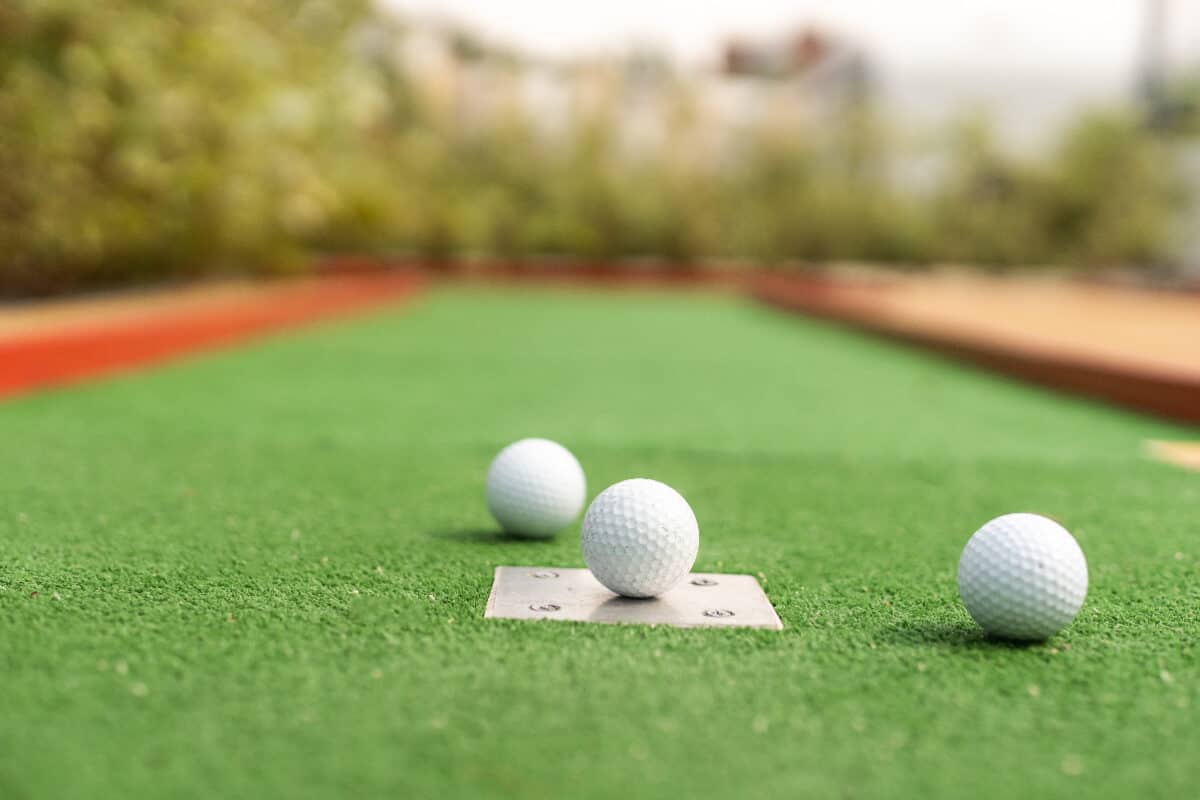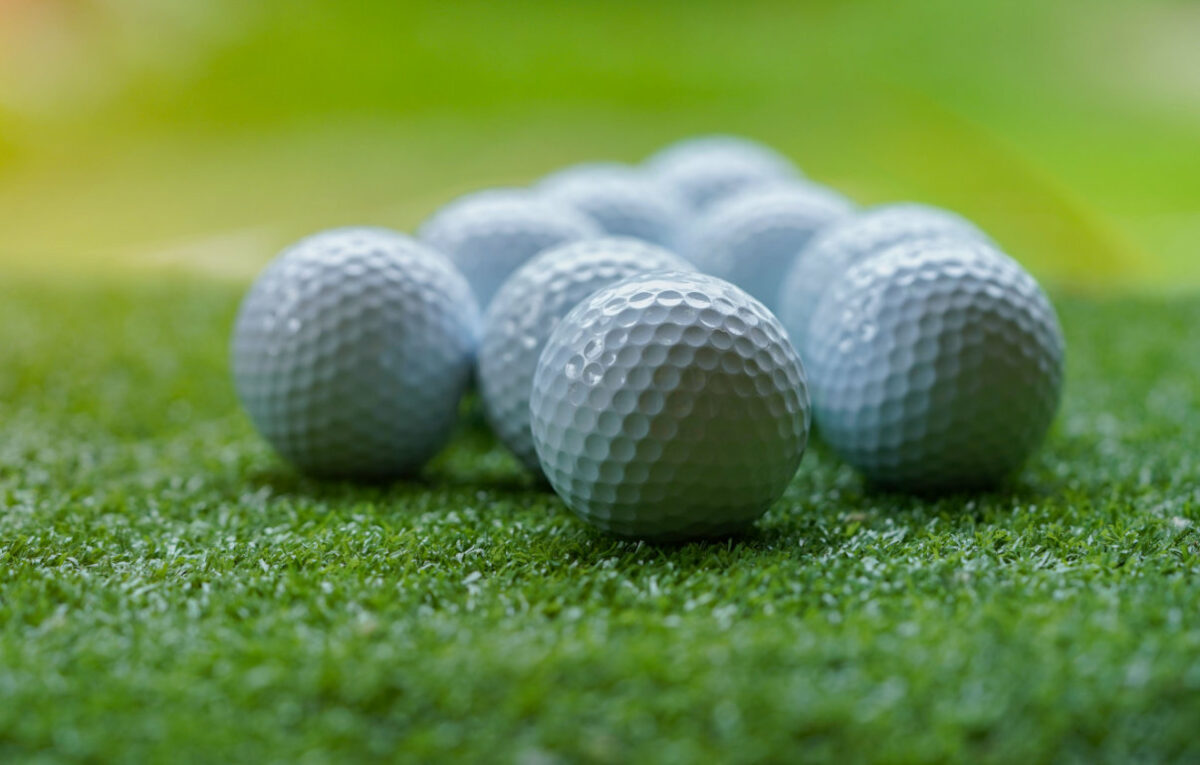How to Know What Golf Ball to Use? The 9 Steps
With so many golf ball models and brands available today engineered for different swing speeds, play styles, and performance benefits, making the right golf ball choice for your game can seem daunting.
While trial and error work, a more informed analytical approach saves time and money.
Here is a systematic guide on how to select the optimal golf ball for your abilities and preferences.

Step 1 – Understand Key Golf Ball Variables
The first step involves gaining a basic grasp of the different golf ball specifications, materials, and design factors in order to compare and contrast different models intelligently:
- Construction – 2-piece, 3-piece, 4-piece, etc. influences performance traits
- Compression Rating – Softer or firmer compression works best for slower or faster swing speeds
- Cover Material – Surlyn covers are more durable while urethane is softer feeling with a higher spin
- Dimple Pattern – Dimple design affects aerodynamics and launch conditions
- Core Type – Liquid, solid or multi-layer cores enhance either distance or feel/spin depending on the formulation
- Firmness Profile – Gradient or progressive density focuses on energy transfer and launch efficiency
Having a sense of these variables prepares you to understand golf ball testing results and characteristics.
Step 2 – Objectively Assess Your Swing and Skill Level
Next, reflect objectively on your golf swing, typical shot patterns, and general skill level. Some key attributes to consider:
- Driver swing speed and typical launch angle
- Iron and wedge shot height and distance control
- Variability in ball striking consistency and typical miss direction
- Short game ability around greens and preferred feel
- Problems like slices, hooks, or ballooning drives
- Skill with shot shaping and ability to work the ball
- Scoring profile and strengths/weaknesses in your game
This assessment creates a performance baseline for golf ball testing and fittings.
Step 3 – Get a Professional Club Fitting
Schedule a professional club fitting session with a certified fitter, bringing your current clubs. Quality fittings analyze your swing characteristics using high-speed cameras and launch monitors to recommend optimal golf ball construction suited to your game.
Key data like clubhead speed, launch angle, spin rates, descent angle, and compression requirements are derived from the fitting shape golf ball selection. Fact-based fitting removes the guesswork.

Step 4 – Try Different Golf Ball Models On-Course
Armed with fitting data and recommendations on golf ball types, test those models along with some alternatives on the course during actual play.
Take detailed notes comparing subjective feedback on distance, feel, control, spin, and other shot factors for each ball brand relative to your current gamer model.
See if performance improvements result over a minimum 5-10 round sample size.
On-course testing under real conditions using your own clubs on familiar holes compares ball performance without speculation. Look for clear patterns in the data.
Step 5 – Fine-Tune Ball Selection with Launch Monitor Testing
After initial on-course testing narrows the golf ball candidates, utilize professional-grade launch monitor analysis to quantify detailed shot and ball flight data for each remaining option.
Dial in the best golf ball by scrutinizing metrics like speed, launch angle, descent angle, apex height, curvature, and spin rates for full iron and driver shots.
Objective feedback from a launch monitor removes subjective biases from ball selection. The optimal golf ball will demonstrate performance advantages suited to your game based on data.
Step 6 – Reconfirm with More On-Course Usage
Return to the golf course for extended play strictly with the data-driven top-choice golf ball model to re-confirm real-world performance when it counts.
Check that positive indicators like distance, dispersion, shot shape versatility, feel, and spin control meet expectations under pressure during scored rounds.
Ensure no flaws arise over 10+ rounds. Reviewing launch monitor data alongside course results eliminates second-guessing. Stick with what the numbers and shots confirm works.

Step 7 – Consider Green-Reading Benefits of Alignment Aids
With the prime ball model identified, consider golf balls featuring visual alignment aids like colored or dashed lines around the side to help with aiming and green reading.
Many average players find alignment aids assist putting and short iron shots without affecting ball flight. Testing alignment aid balls yourself determines if scoring improves.
Step 8 – Factor in Price and Budget Requirements
Finalize golf ball selection by factoring in pricing and budget requirements. While top balls provide incremental advantages, balls costing $20 less per dozen may deliver 95% of the performance.
Avoid overpaying for negligible gains. And ensure enough budget to use the ideal ball for all rounds, not just tournaments. The best ball for your game gives you confidence in it across the bag.
Step 9 – Retest Golf Balls Annually
Reassess golf ball selection every year or two as new models are released. Swing changes and technique improvements also warrant retesting for the best current match.
Be willing to switch balls if the data demonstrates clear gains. Sticking only with tradition or brand loyalty can blind you to better options.
Selecting the optimal golf ball for your game needs not be guesswork. By combining professional fittings, detailed testing data, and assessing your true on-course needs, making an informed golf ball choice becomes straightforward. Dial in what works best for you.
